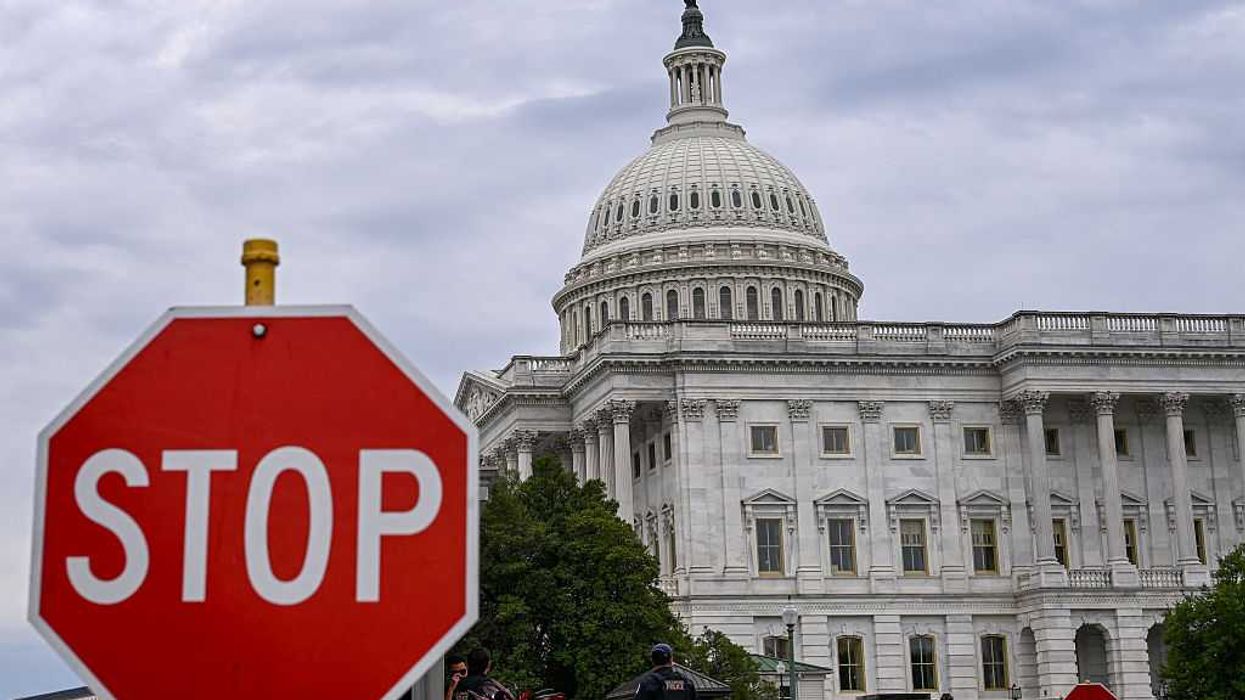Editor's Note: Glenn just purchased the entire 'Roe v. Wade' archive for his historical vault from Linda Coffee, the lawyer who first filed and argued the case. He didn't want the archive to end up in some pro-choice activist's house as a relic of abortion. He wanted to preserve 'Roe v. Wade' as a historical reminder of the sanctity of life and to never repeat the atrocities of 'Roe' ever again.
Glenn also wants to honor YOUR story alongside this historical document. Stories like the one you will read below will be recorded and stored alongside the 'Roe v. Wade' archive. Glenn wants to honor the mothers who were affected by Roe AND the babies who lost their lives to it.
If YOU have a story about abortion, whether you had an abortion and regretted it, or were planning on getting an abortion and decided not to, Glenn wants to hear from you. If you feel inclined, write your story down on paper, and send it to the P.O. box, which you can find HERE. Glenn will preserve your story as an important part of our nation's history.
Read the original story below.
I can no longer relate to the modern pro-choice woman. I don’t want to shout my abortion. I want to pretend it never happened. Up until the SCOTUS leak, I had done a pretty good job of burying my 20-year secret. But the Roe v. Wade information earthquake triggered an eruption. I can no longer pretend to be ambivalent or leave it to blue-check pro-lifers to speak for me. My days of repeating the “safe, legal, and rare” mantra like a good, GenX libertarian feminist are over.
Some pro-abortion activists call their life-ending procedure “self-care,” like they just booked a hot stone massage or a facial at a spa. This is a polite euphemism many women tell themselves – not because we are cold-blooded killers, but because it’s how we survive. We HAVE to lie in order to justify what is actually taking place. Denial is a protective coating, a barrier from the truth. Remember, any woman born after Roe v. Wade has been programmed to believe that abortion is a natural-born right. “It’s legal; therefore it must not be evil. This is a medical procedure. Women do it every day.” Planned Parenthood has a nice way of describing abortion on its website: “A doctor uses a combination of medical tools and a suction device to gently take the pregnancy tissue out of your uterus.” “Gently take the tissue out.” Benign euphemisms that wrap our hearts and minds in a suffocating cocoon. Benign euphemisms to keep us in line.
I was raised in the Bible Belt and to believe that sex before marriage was the gravest of sins. You’d be better off robbing a store by pistol than to be caught fornicating with a boy. And yet I did fornicate with a boy. No boy I’d ever be proud to bring around to my parents. I never gave him the option to talk me out of it. I just demanded he pay half for the procedure and never speak of it again. I told myself it would be easier to survive the hidden shame of the abortion than wear the shame of my sin on my belly for the next nine months.
...the pill I took made an ugly, painful mess, and it didn’t finish the job.
I took the so-called “easy” way out at six weeks along and swallowed a pill I got from some abortionist who gave me the creeps. He was no medical saint like the one portrayed in “The Cider House Rules,” nobly saving women from coat-hanger abortions. The doctor in my story made a quick buck at the expense of terrified “good girls.” Years later I would learn he kept aborted fetuses in buckets and was under investigation for shady medical practices. I couldn’t leave his clinic fast enough, but at least I wouldn’t have to miss work or skip my college classes. I could finish my degree and still make my parents proud. How convenient. But the pill I took made an ugly, painful mess, and it didn’t finish the job. Now I had to see a real obstetrician, get an ultrasound, and deal with the aftermath.
This doctor’s office was nicer. It had bright lights and pink walls. Although my doctor was professional, I still felt the quiet judgment in her voice. I refused to look at the image of my tortured fetus on the screen. I knew what it would mean if I did – my feminist career ambitions would lose the battle to my soul if I looked at that baby. The doctor told me the fetus was still viable but likely mentally damaged. The “kinder” thing to do would be to finish the job at an in-clinic abortion. End the fetus’ suffering and end my own self-torture. I woke up from anesthesia to learn the abortion was complete. It’s over so quickly, but the internal conflict hangs. And hangs.
You find weird ways to cope. Not long after, I discovered an abandoned robin’s egg, still perfectly intact. I wrapped it in a sock and carried it with me for over a decade. If I couldn’t do right by my own child, maybe I could keep this unhatched egg safe. Eventually, I had to come to terms with the fact that the bird egg was dead, and I got therapy. He was a good New York psychologist. Secular, liberal, tolerant. He helped me to forgive myself, but I always knew who I really needed to ask for forgiveness …
It’s easy for a young woman with all those stockpiled eggs in her ovaries to be pro-choice. She can toss away the miracle of life like a rotten banana or a bruised apple because it is easily replaced. It wasn’t until I was forced to confront the mortality of my own fertility that I felt the full force of my regret.
But I do not write this letter to achieve redemption or to be the new face of the pro-life movement. You will not see me pleading with women outside an abortion clinic. You will not see me protesting with a cutesy, homemade sign at the March for Life. You will not see me sparring on Twitter, confronting baby-killers with cold, hard facts. For now, you will not even know my name. I suppose this is not very brave, but my story is not complete and God’s work in me is in an active state. Mine is a modest mission: Maybe if I’m honest about my own wounds, I can help other women like me to heal. Maybe I can love the terrified, knocked-up woman in the Bible Belt who believes the best worst lies our society has ever told, better than any conservative talk show host ever could.
The SCOTUS leak ripped a band-aid off a festering 50-year-old wound.
The SCOTUS leak ripped a band-aid off a festering 50-year-old wound. It’s naive to think we will fix this mess for the unborn overnight and deprogram men and women plugged into 50 years of slick, well-packaged lies. Slavery was legal in the U.S. for over 200 years before we fought a war to end it. And it was another 100 years before we ended state-sanctioned racism.
When it comes to the issue of defending innocent life, I know it’s hard to be patient. This is a clear battle of good vs. evil for many on the right, but you need allies like me – the former “safe, legal, and rare” pro-choicers who are afraid to come out of the shadows. Afraid to become a political prop in the culture wars, but willing to do the quiet missionary work in our back yards.
I hope for the day future progressives look back in horror at today’s progressives fighting to keep abortion on demand. I hope for the day the New York Times publishes the pro-life version of the 1619 Project. Maybe they’ll call it the “1973 Project,” “whose mission is to reframe the country's history by placing the consequences of abortion and the contribution of the pro-life movement at the very center of our national narrative.”
Until that day, I want to help these women to be braver than me. To see beyond their impossible tomorrow. If I had allowed someone the chance to help me be brave, I might not have had the same successful career, but I would have a 20-year-old son or daughter in whom to invest this unexplained overflow in my heart.

 ALEX WROBLEWSKI / Contributor | Getty Images
ALEX WROBLEWSKI / Contributor | Getty Images
 JIM WATSON / Contributor | Getty Images
JIM WATSON / Contributor | Getty Images Joe Raedle / Staff | Getty Images
Joe Raedle / Staff | Getty Images AASHISH KIPHAYET / Contributor | Getty Images
AASHISH KIPHAYET / Contributor | Getty Images